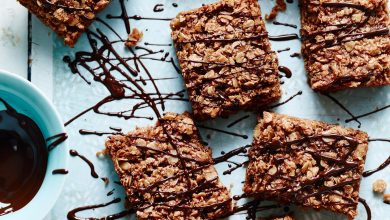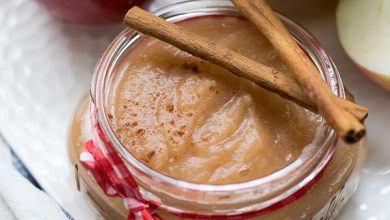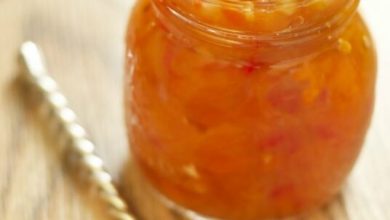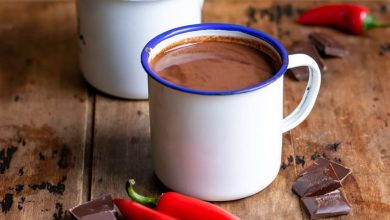Artichoke Spinach Hummus
🌱🍃🧀🔪🍽️😋
Artichoke Spinach Hummus is a delicious and flavorful dip that combines the earthy goodness of artichokes and the freshness of spinach with the creaminess of hummus. It’s a great appetizer or snack that’s perfect for parties or simply enjoying with some pita bread, crackers, or veggies.
History:
The exact origin of Artichoke Spinach Hummus is unclear, but it’s a fusion of Mediterranean and Middle Eastern flavors. Hummus itself has been enjoyed for centuries in the Middle East, and the addition of artichokes and spinach is a modern twist that adds a unique, savory taste.
Components:
- Canned artichoke hearts
- Fresh spinach
- Chickpeas (garbanzo beans)
- Tahini
- Lemon juice
- Olive oil
- Garlic
- Salt and pepper
- Paprika (optional)
- Cayenne pepper (optional)
Steps to Prepare Artichoke Spinach Hummus:
-
Prepare the Ingredients:
- Drain and rinse the canned artichoke hearts and chickpeas.
- Wash and chop the fresh spinach.
- Crush or finely mince garlic cloves.
-
Blanch the Spinach:
- Bring a pot of water to a boil and blanch the chopped spinach for about 30 seconds. Drain and immediately transfer to an ice water bath to preserve the vibrant green color. Squeeze out excess water.
-
Blend the Ingredients:
- In a food processor, combine the artichoke hearts, chickpeas, blanched spinach, tahini, lemon juice, olive oil, minced garlic, and a pinch of salt and pepper.
- You can add a dash of paprika and cayenne pepper for some extra flavor if you like.
-
Blend Until Smooth:
- Process the mixture until it becomes a smooth and creamy consistency. You may need to scrape down the sides of the food processor a few times to ensure everything is well combined.
-
Taste and Adjust:
- Taste the hummus and adjust the seasonings, adding more lemon juice, salt, or pepper to your preference.
-
Serve:
- Transfer the Artichoke Spinach Hummus to a serving bowl and drizzle a bit of olive oil on top for presentation.
- Serve it with pita bread, tortilla chips, carrot sticks, or your favorite dippers.
Time Needed:
The preparation time for Artichoke Spinach Hummus varies, but it typically takes around 15-20 minutes. This includes the time to prepare and process the ingredients. The blanching step for spinach only takes a minute or so, and the blending process is relatively quick.
So, in about 20 minutes or less, you can have a tasty and visually appealing Artichoke Spinach Hummus ready to enjoy with your favorite snacks. 🍃🧀🔪🍽️😋
Certainly! Here are the nutrition facts and health information for Artichoke Spinach Hummus:
Nutrition Facts (per 2 tablespoons serving):
- Calories: 70
- Total Fat: 4g
- Saturated Fat: 0.5g
- Sodium: 115mg
- Total Carbohydrates: 7g
- Dietary Fiber: 2g
- Sugars: 0g
- Protein: 2g
Health Information:
-
Rich in Fiber: This hummus contains a good amount of dietary fiber from the chickpeas, spinach, and artichokes. Fiber is essential for digestive health and can help you feel fuller for longer.
-
Healthy Fats: The olive oil used in the recipe provides heart-healthy monounsaturated fats, while the tahini contributes additional healthy fats. These fats are beneficial for overall health.
-
Protein Source: Chickpeas are a great source of plant-based protein, making this hummus a suitable option for vegans and vegetarians. Protein is essential for muscle health and overall body function.
-
Low in Saturated Fat: This hummus is low in saturated fat, which is known to be less heart-healthy than unsaturated fats.
-
Vitamins and Minerals: The hummus is a good source of essential vitamins and minerals, such as iron, magnesium, and folate from the chickpeas, as well as various vitamins like vitamin C, vitamin K, and vitamin A from the spinach.
-
Antioxidants: Spinach is rich in antioxidants, which can help protect your cells from damage caused by free radicals. Artichokes also contain antioxidants that can benefit your health.
-
Low Sugar: This hummus is naturally low in sugar, which is a healthier option compared to many store-bought dips and snacks.
-
Gluten-Free: This recipe is gluten-free, which makes it suitable for those with gluten sensitivities or celiac disease.
-
Versatile: You can customize this hummus by adjusting the ingredients to fit your dietary preferences or nutritional needs. For example, you can use less olive oil if you want to reduce the fat content or adjust the seasoning to control sodium intake.
-
Balanced Snack: When enjoyed with whole-grain pita bread or vegetable sticks, this hummus can be part of a balanced snack that provides a good combination of carbohydrates, protein, and healthy fats.
Remember that the specific nutritional content may vary slightly based on the brands of ingredients used and any modifications to the recipe. However, homemade hummus is generally a nutritious and flavorful choice for a snack or appetizer.








